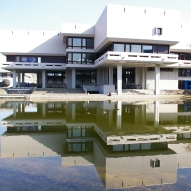Zusammenfassung
The myrmicine ant genus Cardiocondyla is characterized by a peculiar male diphenism with winged disperser males and wingless, "ergatoid" fighter males. Here we describe and illustrate the morphology of the male external genitalia of 13 species of this genus. Several characters, especially the parossiculus of the volsella and the medial face of the paramere, vary between different species groups ...
Zusammenfassung
The myrmicine ant genus Cardiocondyla is characterized by a peculiar male diphenism with winged disperser males and wingless, "ergatoid" fighter males. Here we describe and illustrate the morphology of the male external genitalia of 13 species of this genus. Several characters, especially the parossiculus of the volsella and the medial face of the paramere, vary between different species groups and might be useful to clarify the infrageneric taxonomy of Cardiocondyla. External genitalia between different phenotypes of a species differ primarily in size. All examined males, both winged and ergatoid, have a parameral hook that resembles a structure described in Nesomyrmex males but apparently is absent in other studied myrmicine ants. The presence and absence of this hook might be useful for future studies on the relationships within the myrmicine tribe Crematogastrini.




 Altmetric
Altmetric